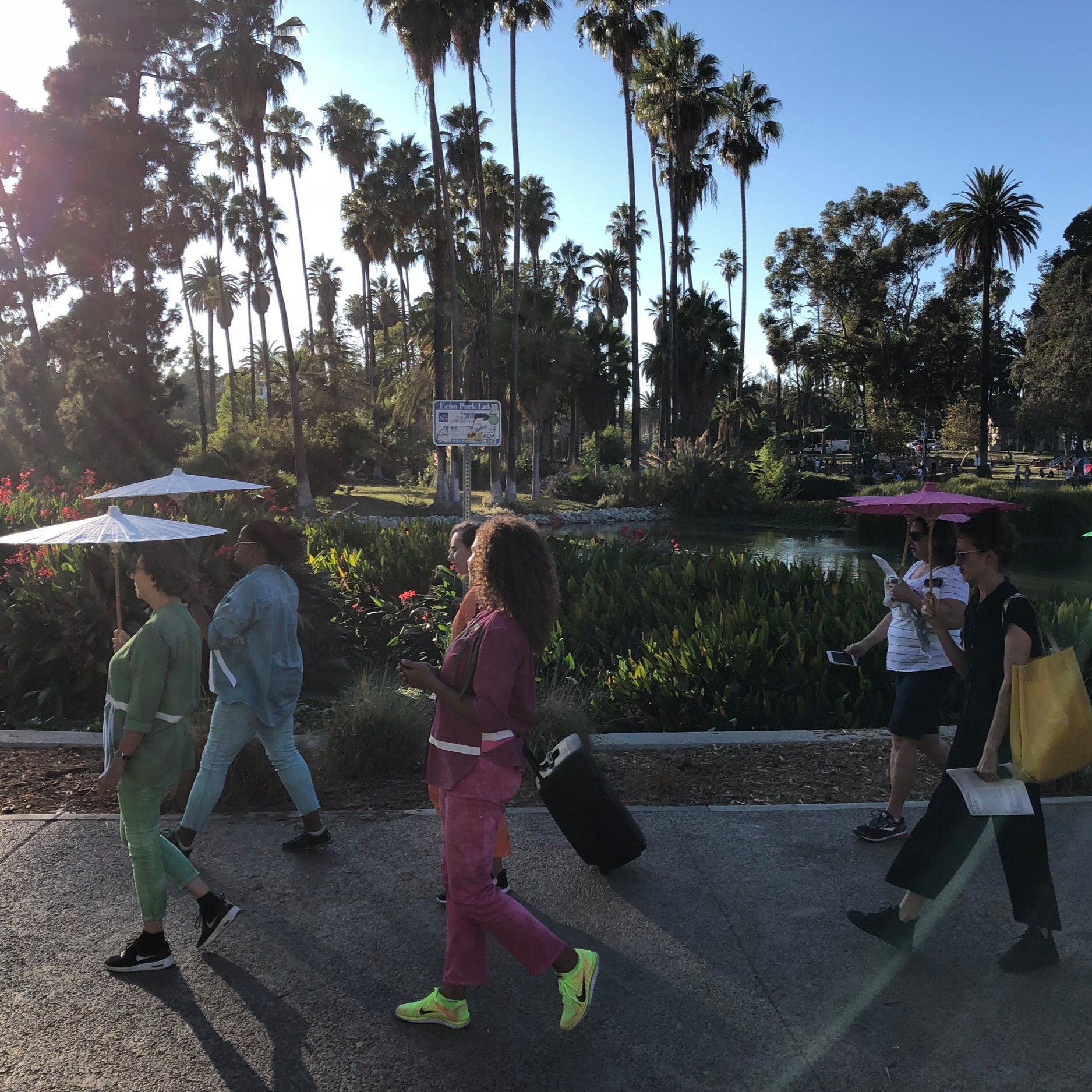ONGOING RESEARCH
Another Museum is Necessary: Transient Performance in the Wake of Institutional Critique
Another Museum is Necessary: Transient Performance in the Wake of Institutional Critique theorizes ways to reimagine contemporary U.S. art museums as transformative anti-colonial spaces. I take movement-oriented artistic works commissioned and presented by leading contemporary art museums as central to an examination of what it means to destabilize and reimagine such institutions. These artworks approach movement as a politicized tactic of being in relation to modalities of fleetingness and flight and the genealogies of thought from Black Studies that undergird these terms. I understand movement—of performers’ bodies, objects, images—as a conduit for refusal, opacity, and critique. This constellation of what I term transient practices challenge the presumed stasis of the museum as institution, the continuance of its hegemonic power relationships, its display conventions, and its collecting practices.
The manuscript toggles between a close reading of artworks and the museum in which a work was presented, making apparent how these institutions are embedded within racial capitalism, neo-imperialism, racism, and sexism. Within each chapter, I analyze distinct movement-oriented works alongside a particular institutional logic key to understanding how art institutions operate: taste, collections, site, the public, and governance. The artists I discuss collectively help dream a future in which tactics of impermanence, fugitivity, and opacity form a politicized practice from which to imagine otherwise from our existing cultural institutions. Another Museum is Necessary argues for the necessity of a relational art historical analysis between art and institution, taking artistic practice seriously as a methodology for structural change.
Banner photo by Jason Hirata.
a haunted botany
The multi-sited collaborative performance project, supported by the MAP Fund, asks what happens when we examine colonialism through human relationships with plants. It begins from the understanding that colonial projects violently imposed human-centric (and human is distinctly parsed through European Enlightenment discourses) states of being and knowing. Through performance and archival research, a haunted botany explores a dialectic between the historic violence and trauma of colonization and the pleasure and desire engendered through plants, focusing on accounts of queer intimacy facilitated through inter-species relationships thatexceeded the bounds of colonial containment and scientific epistemologies.
By addressing plant life as a central agent of colonial expansion, a haunted botany reads hegemonic desire against the grain to think about how specific plants informed colonial assumptions of and relationships to certain places and people. The project argues that a complex and often violent matrix of desire underpins a critical understanding of colonial trajectories, botanical histories, and material relations. a haunted botany is a collaboration with Sister James.
Learn more here.



